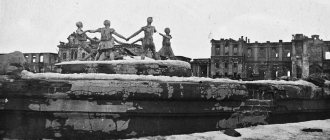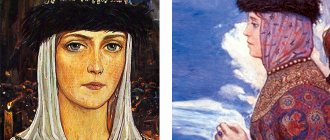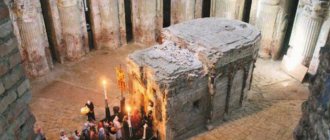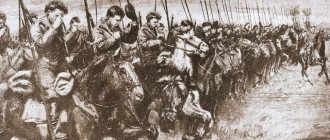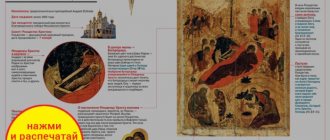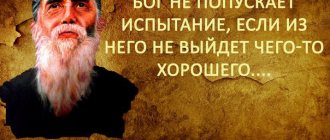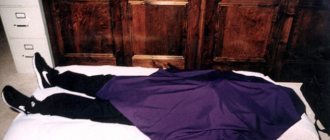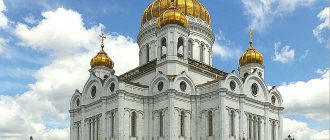| Scheme of the Battle of Kulikovo |
Battle of Kulikovo
, a battle between the troops of the Russian principalities and the Mongol-Tatars on September 8, 1380 (summer 6888 from the creation of the world) on the territory of the Kulikovo field between the Don, Nepryadva and Krasivaya Mecha rivers in the territory currently belonging to the Kimovsky and Kurkinsky districts of the Tula region, on area about 10 sq. km.
Background of the battle
In 1380, the Horde emir and temnik Mamai, who claimed the power of the khan, decided to carry out a devastating raid on Rus' in order to strengthen his position in the Horde.
Mamai was not a Genghisid (descendant of Genghis Khan) and therefore had no rights to the throne, but his power reached such an extent that he could place khans on the throne of his choice and rule on their behalf. A successful campaign would take him to unprecedented heights and allow him to put an end to his rivals. Mamai agreed on an alliance with the Grand Duke of Lithuania Jagiello and the Grand Duke of Ryazan Oleg. Having learned about Mamai's campaign, Dmitry Ivanovich announced the mobilization of forces from all his subordinate and allied principalities. Thus, the Russian army for the first time acquired a national character, the Russian people were tired of living in constant fear and paying tribute to the infidels, for more than 250 years the Tatar Yoke held on in Rus', enough was enough - the Russian people decided and collections began from all nearby Russian lands, and as mentioned above All this was headed by Dmitry Ivanovich, the future “Donskoy”. However, back in 1375, Dmitry Ivanovich ordered the establishment of the so-called “rank books”[1], where information was entered on the military and other service performed by the governors, on the number and places of formation of regiments. The Russian army (100-120 thousand people) gathered in Kolomna. From there the army headed to the Don. Dmitry was in a hurry: intelligence reported that Mamai’s army (150-200 thousand people) was waiting for the Lithuanian squads of Jagiello near Voronezh. Having learned about the approach of the Russians, Mamai moved towards them. When the Russians approached the Don along the Ryazan land, the governors argued whether to cross or not, since beyond that the territory of the Golden Horde began. At that moment a messenger from St. Sergius of Radonezh with a letter calling on Dmitry to firmness and courage. Dmitry ordered to cross the Don.
Preparing for battle
On the night of September 8, 1380, the Russians crossed the Don and lined up on the Kulikovo field (modern Tula region) at the mouth of the Nepryadva River, a tributary of the Don. Two regiments (“right” and “left hand”) stood on the flanks, one in the center (“large regiment”), one in front (“advanced regiment”) and one in ambush (“ambush regiment”) on the eastern edge of the field , behind the “green oak grove” and the Smolka River. The ambush regiment was commanded by Dmitry's cousin, the brave and honest warrior of Serpukhov, Prince Vladimir Andreevich. With him was the experienced governor Dmitry Mikhailovich Bobrok-Volynets, brother-in-law of Prince Dmitry Ivanovich. The Russians had nowhere to retreat: behind them there was a cliff 20 m high and the Nepryadva River. Dmitry destroyed the bridges across the Don. It was win or die.
The left flank of the Russian army, which was supposed to bear the main blow of the Tatars, crossed into the muddy banks of the Smolka River. The right flank was also protected by the marshy banks of the Nepryadva River, as well as by heavily armed Pskov and Polotsk cavalry squads. All the city regiments were gathered in the center of the large army. The advanced regiment was still part of a large regiment, while the task of the guard regiment was to start a battle and return to duty. Both regiments were supposed to weaken the force of the enemy attack on the main forces. Behind the large regiment there was a private reserve (cavalry). In addition, a strong ambush regiment was created from selected cavalry under the command of experienced military leaders - governor Dmitry Bobrok-Volynsky and Serpukhov prince Vladimir Andreevich. This regiment performed the task of a general reserve and was secretly located in the forest behind the left flank of the main forces.
Mamai placed in the center of his army the hired Genoese heavily armed infantry, which he had recruited from the Italian colonies in Crimea. It had heavy spears and advanced in close formation of the Greek phalanx, its task was to break through the Russian center, it was a strong and well-trained army, but it fought not for its land, but for money, unlike the Russian knights. Mamai concentrated the cavalry on the flanks, with which the Horde usually immediately “encompassed” the enemy.
Battle
| Duel between Peresvet and Chelubey. |
According to legend, on the morning of September 8, there was a thick, impenetrable fog over the Kulikovo Field, which dissipated only by the twelfth hour.
The battle began with a duel of heroes. From the Russian side, Alexander Peresvet, a monk of the Trinity-Sergius Monastery, was put up for the duel, before he was tonsured - a Bryansk (according to another version, Lyubech) boyar. His opponent turned out to be the Tatar hero Temir-Murza (Chelubey). The warriors simultaneously thrust their spears into each other: this foreshadowed great bloodshed and a long battle. As soon as Chelubey fell from the saddle, the Horde cavalry moved into battle... Historians believe that the battle began suddenly, at dawn. The Horde cavalry attacked the “advanced regiment” and destroyed it, then cut into the “big regiment” and made its way to the black princely banner. Brenko died, Dmitry Ivanovich himself, who fought in the armor of an ordinary warrior, was wounded, but the “big regiment” survived. Further onslaught of the Mongol-Tatars in the center was delayed by the deployment of the Russian reserve. Mamai transferred the main blow to the left flank and began to press back the Russian regiments there. They wavered and backed away towards Nepryadva. The situation was saved by the Ambush Regiment of Dmitry Babrok-Volynsky and Serpukhov Prince Vladimir Andeevich, who emerged from the “green oak grove”, struck the rear and flank of the Horde cavalry and decided the outcome of the battle. The Horde experienced confusion [2], which the “big regiment” took advantage of and launched a counteroffensive. The Horde cavalry fled and crushed its own infantry with its hooves. Mamai abandoned the tent and barely escaped. It is believed that Mamaev’s army was defeated in four hours (if the battle lasted from eleven to two o’clock in the afternoon). Russian soldiers pursued its remnants to the Krasivaya Mecha River (50 km above the Kulikovo Field); The Horde Headquarters was also captured there. Mamai managed to escape; Jagiello, having learned of his defeat, also hastily turned back. Mamai was soon killed by his rival Khan Tokhtamysh.
After the battle
The losses of both sides in the Battle of Kulikovo were enormous, but the enemy losses exceeded the Russians. The dead (both Russians and Horde) were buried for 8 days. According to legend, most of the fallen Russian soldiers were buried on the high bank at the confluence of the Don and Nepryadva. 12 Russian princes and 483 boyars (60% of the command staff of the Russian army) fell in the battle. Prince Dmitry Ivanovich, who participated in the battle on the front line as part of the Big Regiment, was wounded during the battle, but survived and later received the nickname “Donskoy.” Russian heroes distinguished themselves in the battle - the Bryansk boyar Alexander Peresvet, who became a monk of St. Sergius of Radonezh, and Andrei Oslyabya (oslyabya in Kaluga means “pole”). The people surrounded them with honor, and when they died, they were buried in the temple of the Old Simonov Monastery. Returning with his army to Moscow on October 1, 1380, Dmitry immediately founded the Church of All Saints on Kulishki and soon began construction of the Vysokopetrovsky monastery in memory of the battle.
The Battle of Kulikovo became the largest battle of the Middle Ages. More than 100 thousand soldiers converged on the Kulikovo field. A crushing defeat was inflicted on the Golden Horde. The Battle of Kulikovo instilled confidence in the possibility of victory over the Horde. The defeat on the Kulikovo Field accelerated the process of political fragmentation of the Golden Horde into uluses. For two years after the victory on the Kulikovo field, Rus' did not pay tribute to the Horde, which marked the beginning of the liberation of the Russian people from the Horde yoke, the growth of their self-awareness and the self-awareness of other peoples who were under the yoke of the Horde, and strengthened the role of Moscow as the center of the unification of Russian lands into a single state.
The Battle of Kulikovo has always been the object of close attention and study in various spheres of political, diplomatic and scientific life of Russian society in the 15th-20th centuries. The memory of the Battle of Kulikovo was preserved in historical songs, epics, stories (Zadonshchina, The Legend of the Massacre of Mamayev, etc.). According to one of the legends, Emperor Peter I Alekseevich, visiting the construction of locks on Ivan Lake, inspected the site of the Battle of Kulikovo and ordered the remaining oak trees of Green Dubrava to be branded so that they would not be cut down.
In Russian church history, the victory on the Kulikovo Field began to be celebrated over time simultaneously with the feast of the Nativity of the Blessed Virgin Mary, celebrated annually on September 8, old style.
| Monument to the heroes of the Battle of Kulikovo. |
Kulikovo field today
Kulikovo Field is a unique memorial site, a most valuable natural-historical complex, including numerous archaeological sites, monuments of architecture and monumental art, and natural monuments. More than 380 archeological monuments from different eras have been discovered in the Kulikovo Field area. In general, the territory of the Kulikovo Field is one of the key areas for the study of rural settlement in the Old Russian period (like the outskirts of Chernigov, the Suzdal Opolye) and represents a unique archaeological complex. 12 architectural monuments have been identified here, including 10 churches (mostly from the 19th century), among which an outstanding architectural monument is the Church of Sergius of Radonezh, the Monastery Church of the Nativity of the Mother of God near the burial place of most Russian soldiers, and others. As complex archaeological and geographical studies have shown, on the Kulikovo field, not far from the battle site, there are relict areas of steppe vegetation that have preserved feather grass, and forests close to pristine ones.
Background
All Russian principalities have been at enmity since the beginning of the twelfth century. Divided and weakened due to internal conflicts, the state was unable to resist the Tatar-Mongol invasion. The result of the attack was the Tatar-Mongol yoke, which deprived Rus' of economic independence for 240 years.
The Golden Horde, which had established itself in Rus', determined that now the Russian princes would be obliged to receive labels to rule from the khans of the Horde. The Vladimir principality was given a special status. The Horde allowed Prince Vladimir to judge other princes.
Every year Rus' had to pay tribute to the conquerors, which meant not only money, but also handicrafts and food products. Every year the Horde collected taxes for gifts for the khan and his retinue. The development of the state slowed down significantly, villages and cities became empty, agriculture was practically destroyed.
By the date of the Battle of Kulikovo, the situation in the state had leveled out a little. The economy was restored, handicrafts and trade began to work at the usual pace that they had before the invasion. The population picked up nationalist sentiments, then spiritual, territorial, and cultural divisions disappeared.
During the reign of the Golden Horde, the most powerful principalities were:
- Suzdal.
- Moscow.
- Tverskoe.
- Ryazanskoe.
- Nizhny Novgorod.
By the date of the Battle of Kulikovo, Moscow had become the center of unification of all the principalities of the state. This is due to the central location of the city, the high level of development of agriculture and crafts.
Why did the confrontation begin?
The Golden Horde did not want the Russian principalities to unite. Mamai, seeing that everything was inevitably leading to this, tried to sow enmity between the princes, to punish Dmitry, the Moscow prince, for disobedience. Mamai had the idea to deprive Dmitry of the Vladimir throne, transferring the latter to Prince Tver, Mikhail. Prince Dmitry did not want to accept Mamai’s decision and began to gather an army capable of resisting the Tatar-Mongol yoke.
By the date of the Battle of Kulikovo, the Russian princes realized that they were strong only when united. Each new battle, ending in the victory of the Russian people, only strengthened the faith of the princes in the correctness of the decision.
When the Principality of Moscow stopped paying tribute, Mamai gathered an army and marched on Moscow. Dmitry believed that he could not pay the tax, because the Tatar Khan illegally took power. The Moscow prince convened supporters in Pereslavl-Zalessky, where a congress was held.
Before the date of the Battle of Kulikovo, Dmitry called on other princes to unite before a common enemy. Troops from the North-East of the state went to his aid. The army from Smolensk, Suzdal, Tver and other cities included peasants, townspeople and artisans. They were armed with bows, spears and sabers.
The date of the Battle of Kulikovo was September 8, but before that, on August 24, all troops gathered in Kolomna.
Khan Tokhtamysh
Two years later, in 1382, the army of Khan Tokhtamysh came to Moscow. In principle, Dmitry Donskoy did Tokhtamysh a favor; he destroyed the army of his rival Mamai, but Tokhtamysh had his own ideas about gratitude. Tokhtamysh took Moscow by deception, asked to open the gates for him, and Muscovites, for some reason, believed him. He burned it and destroyed almost the entire population of the city.
The chronicles say that at least 200 thousand people died as a result of this invasion.
Dmitry Donskoy himself, however, managed to escape. He, just at that time, was in the north of the country, gathering an army in order to repel Tokhtamysh. But, of course, at that time Rus' could not overcome two battles as large as Kulikovskaya. After Tokhtamysh’s campaigns, Moscow again began to pay tribute to the Tatars, but now it was well aware that the payment of this tribute depended only on the level of strength of the Moscow prince and the Tatar khan.
Participants in the battle
The exact number of warriors who fought in the battle is still unknown. Historians are inclined to believe that the Tatar-Mongols had numerical superiority. Why do you need to know this? Because it is not enough just to learn the date of the Battle of Kulikovo, you need to study the massacre from all sides in order to draw the right conclusions.
There were from fifty thousand to one hundred and fifty thousand Russian soldiers. The army of the Golden Horde numbered 60,000 - 200,000 people. Warriors of the Polovtsian Principality came to the aid of the Principality of Moscow.
Mamai’s army was considerably weakened after the battles with the Russians, so he decided to hire residents of the Volga region and the Caucasus. The khan found allies among the subjects of Prince Jagiello. The latter offered help because he wanted to get the western territories of Rus'. In addition, Jagiello was afraid that Rus' would rise again and begin to develop. Oleg Ryazansky went over to the side of the Tatar-Mongol yoke. There were different nationalities in Mamai's army:
- Cheremisy.
- Fryags.
- Circassians.
- Kabardians.
- Adyghe peoples.
- Genoese mercenaries.
Prince Dmitry understood that unification carried a great threat, so he came up with a strategy thanks to which the enemy troops were never able to unite.
Preparing for the battle - the Battle of Kulikovo in brief
The events at the Vozha River were the last straw. Mamai wanted revenge. Batu’s laurels haunted him and the new khan dreamed of repeating his feat and walking through all of Rus' with fire. Recent events have shown that the Russians are not as weak as before, which means the Mongols need an ally. They found him quickly enough. Mamai’s allies were:
- King of Lithuania - Jagiello.
- Prince of Ryazan - Oleg.
Historical documents indicate that the Prince of Ryazan took a contradictory position, trying to guess the winner. To do this, he entered into an alliance with the Horde, but at the same time regularly reported information about the movements of the Mongol army to other principalities. Mamai himself gathered a strong army, which included regiments from all lands that were controlled by the Horde, including the Crimean Tatars.
Training of Russian troops
Impending events required decisive action from the Grand Duke. It was at this moment that it was necessary to gather a strong army that could repel the enemy and show the whole world that Rus' had not been completely conquered. About 30 cities expressed their readiness to provide their squads to the united army. Many thousands of soldiers entered the detachment, the command of which was taken by Dmitry himself, as well as other princes:
- Dmitry Bobrok-Volynits
- Vladimir Serpukhovsky
- Andrey Olgerdovich
- Dmitry Olgerdovich
At the same time, the whole country rose up to fight. Literally everyone who could hold a sword in their hands enrolled in the squad. Hatred of the enemy became the factor that united the divided Russian lands. Let it be only for a while. The combined army advanced to the Don, where it was decided to repel Mamai.
Strategy
Every schoolchild remembers the year and date when the Battle of Kulikovo took place, but only a few remember the trick Dmitry Donskoy came up with. The strategy was highly risky, but ultimately led to victory. The Moscow prince crossed the Oka, the southern bank of the Don, and then destroyed the crossing. Now the Tatars could not surround the enemy, but the Russians had nowhere to retreat if they lost. The principalities regarded the crossing of the Oka as a very dangerous maneuver; some thought it was suicide. Although they did not believe in the strategy, it brought victory to the Russian troops.
Construction of a stone Kremlin
Despite such a peaceful position, Dmitry Donskoy, apparently, already understood perfectly well that sooner or later he would have to fight the Tatars. Beginning in 1367, he built a new Moscow Kremlin. For the first time in the history of the city, this Kremlin is not wooden, but stone. White stone was taken as a building material from the area of the village of Myachkovo, 30 kilometers from Moscow.
This white stone Kremlin turned out to be, however, not very durable. A hundred years later it was replaced by a modern red brick Kremlin, built under Ivan III. But Dmitry Donskoy’s white stone Kremlin played its role in the history of the city and in the history of the country. In particular, for the first time in the history of our country, artillery was installed on its towers.
Battle
The year and date when the Battle of Kulikovo took place went down in history - September 8, 1380. The morning was foggy, so the battle did not begin until after noon. First there was a fight between the advanced infantrymen, and then a duel between Alexander Peresvet and the Tatar Chelubey. Peresvet was able to knock the enemy out of the saddle, but both warriors died anyway.
During the battle, Dmitry Donskoy was dressed like any soldier; he motivated the army to victory with fearlessness and courage. Another trick of the Moscow prince was dressing up. Dmitry exchanged things with boyar Brenko, who was killed a little later during the massacre.
At first, the Horde won, defeating all the advanced Russian troops. Most of the losses were among the vigilantes. The enemy soldiers wanted to go to the rear and surround the Russians.
Unexpectedly, the ambush cavalry of the Serpukhov prince struck the Horde in the back, causing the mounted Tatars to be driven into the river and then destroyed. A sudden blow turned the tide of the battle. Now the Russian reserve cavalry went on the offensive.
According to Mongolian custom, Mamai watched the battle from afar, from the Red Hill. When the Russians began to win the battle, the khan, along with the remaining army, began to flee. Russian warriors ran after the Horde far beyond the Kulikovo field and finished off Mamaev’s warriors.
During the massacre, the Prince of Moscow was wounded, and later he was found unconscious under a felled birch tree in the forest. After the battle, the bodies had to be collected for eight days. The Russians lost half of their army, so it was decided to build a church in memory of those killed on the Kulikovo field. The temple has not existed for many centuries.
Mamaev’s army lost about 70% of its soldiers, most of whom died not in battle, but when the Russians caught up with the fleeing soldiers.
Will of Dmitry Donskoy
Dmitry Donskoy died in 1389 quite young. He was only thirty-nine years old. In his will, he made his eldest son Vasily the Grand Duke without a Horde label, that is, without waiting for the consent of the Tatar-Mongols for him to occupy the Grand Duke's throne. This once again proves the whole conditionality of the horde’s ownership of Moscow lands. Dmitry Donskoy understood this perfectly.
In his will, Dmitry Donskoy established the order of succession to the throne from brother to brother, that is, after the death of his eldest son Vasily, his youngest son, Yuri, was to rule, who was temporarily given the city of Zvenigorod as an inheritance. Actually, that’s why he received the name Yuri Zvenigorodsky. But Vasily I had a different view of this problem. He decided to establish his own dynasty. It was because of this that a great feudal war broke out in the 15th century.
What did the Horde want to achieve?
The date of the beginning and end of the Battle of Kulikovo is the same, because the battle ended on the same day. It took much more time to remove the bodies and return to Moscow. What did Khan Mamai want to achieve? The ruler of the Golden Horde was haunted by the glory of Batu. He wanted to restore power over the Russians, regularly receive tribute, and undermine the growing power of the capital.
Mamai was so confident of victory that he did not particularly prepare for the battle, he was only looking for allies. They became the Ryazan and Great Lithuanian principalities.
When the Russians decided to fight
Why is the date of the beginning and end of the Battle of Kulikovo exactly like this, since the Tatar-Mongol yoke lasted in Rus' for more than two hundred years? The massacre was preceded by several events that helped the Russians decide:
- In the Golden Horde, the time had come for internal turmoil and disputes, and therefore the khan’s power weakened.
- Society increasingly wanted to unite the lands and free themselves from the invaders.
- In 1371, Mikhail Alexandrovich Tverskoy received the label to reign in Vladimir. Prince Dmitry Ivanovich was stung and announced that he refused to receive the label. He also did not allow Mikhail into the principality. Three years after these events, the Moscow prince completely refused to pay the Horde.
- In 1374 - 1375, Mamai ambassadors arrived in Nizhny Novgorod, where they were killed by angry residents.
- A series of military victories also strengthened the faith of the Russian army. Tagai was defeated in 1365, 1367 - victory over Bulat-Timur. The Russian army made a campaign to the middle Volga in 1370, but returned only six years later and not empty-handed, but with a payoff from the ruling Mamaev’s henchmen.
- In 1378, Mamai sent an army against the wayward Donskoy, but the Horde lost on the Vozha River. They ravaged Ryazan, but this did not bring victory.
As you can see, the start date of the Battle of Kulikovo after all the events was already “looming” on the horizon.
Lithuanian-Moscow War
The main directions of Moscow's policy at this time remained the struggle in the northwest against Lithuania and the confrontation with the Horde in the southeast. A great contribution to the strengthening of Moscow was made by one of the main associates of Dmitry Ivanovich, Metropolitan Alexy, on whose initiative in 1366-1367.
a white stone Kremlin was built, which was very useful, since already in 1368 the Lithuanian-Moscow war began.
In 1368-1372. There was a Lithuanian-Moscow war, the cause of which was Lithuania’s attempt to intervene in the state affairs of the Moscow principality and the desire to exert significant influence on the internal political processes of Moscow.
Olgerd. Engraving from “Description of European Sarmatia”, 1578
This war includes the campaigns of the Lithuanian prince Olgerd against Moscow in 1368, 1370 and 1372. However, Olgerd's campaigns were not crowned with success, and therefore in 1372 the Principality of Lithuania was forced to sign the Treaty of Lubut
with Moscow, under the terms of which Lithuania renounced its claims to some Russian lands.
Division of the Russian army
To win, it was important to correctly distribute the soldiers, which Dmitry Donskoy successfully accomplished. By the date of the start of the Battle of Kulikovo, the division was as follows:
- A large regiment commanded by the Prince of Moscow himself.
- Right hand regiment under the leadership of Andrei Litovsky.
- The advanced regiment, which included Kolomna soldiers.
- The left-hand regiment was commanded by Theodore Molozhsky and Vasily Yaroslavsky.
- The ambush regiment was on the right and was led by commander Vladimir Andreevich.
- The guard regiment was commanded by John of Tarusa and Simeon Obolensky.
Reasonable Precautions
If earlier the Slavs perceived battles with the Tatar-Mongols as fun, then with the onset of the yoke people became more careful. No one else was in a hurry, the Russians were waiting for Dmitry Ivanovich to prepare a battle plan.
To prevent the large army from becoming crowded on the way to Kolomna, it was decided that the military army would take three different roads. Following the army was a convoy, on which the soldiers laid heavy pieces of armor. The boyars and princes had large carts where their servants sat. The Moscow prince invited merchants to go on a campaign, since they knew the southern routes, Crimean cities, and border villages well.
The soldiers left Moscow on August 15, and were in Kolomna only on the 24th of the same month. There were already allies in the city who responded to the call for help. The next day, Dmitry Ivanovich examined all the soldiers and divided them into four regiments.
Here it becomes clear that Oleg Ryazansky betrayed Donskoy, although he remained on good terms with him until the very end. Maybe for this reason Dmitry decided to change the plan. Instead of crossing the Oka near Kolomna, he deviated slightly to the West and passed through the Ryazan lands. Thanks to this maneuver, the army managed to catch up with the late detachments.
Apart from the Prince of Moscow, there were no other major princes in the military campaign. Only Dmitry Ivanovich participated with his subordinate princes and boyars. Already at the battle site, troops began to be deployed. First there was the Advanced Regiment, followed by the Bolshoi Regiment. The right and left regiments occupied the flanks, and the cavalry settled directly behind them. The Ambush Regiment camouflaged itself in the forest behind the left flank.
In what year the Battle of Kulikovo took place, we found out the date, but it remains to analyze the position of the Russian army at the time of the battle. But it was unenviable, especially if we had to retreat: in the rear there were deep ravines and a river. The crossing of the river demonstrated to the invaders that the people were ready to defend their lands and freedom to the end. The Khan's army was forced to stand in deployed formation; it had no reserves. The forward positions were occupied by a cavalry regiment, followed by infantry.
Selecting a location
The date of victory in the Battle of Kulikovo was close, but then the princes did not yet know about it. Long before the battle, the question arose about the location of the massacre. How did you choose the Kulikovo field?
The princes argued for a long time about where the battle would take place: some said that it was necessary to cross to the opposite bank, while others did not want to leave the opportunity for the Ryazan prince and the Lithuanian troops to enter from the rear.
In favor of the crossing they said that stopping before it would be akin to cowardice, but after the crossing the fighting spirit would increase. The warriors will know that there is nowhere to retreat, they will have to fight until victory. Dmitry Ivanovich was told many times that commanders before him crossed rivers and eventually won victories. To this, the Prince of Moscow objected that he was not going to look at the achievements of others, but wanted to liberate his native land. Donskoy liked to repeat then that there were only two options: to die or to win.
The prince sent an army across the Don to the battle site. It was necessary to hurry, because the arriving messengers reported that Mamai knew everything and was already heading to the Don.
They managed to cross the river only by nightfall, so the army had to set up camp not far from the Kulikovo field, near a tributary of the river. The field itself could be seen if you climbed the coastal hills. The Smolka River flowed through the field, where the Mamaev horde stood, which did not have time to prevent the crossing of the Russian army.
The date, results and participants of the Battle of Kulikovo say that the battlefield was chosen for certain reasons. The military-tactical significance of the place was also taken into account. If the Russians had remained on the left bank, they would have had to defend themselves during the entire massacre. Now the bridges behind were burned and all they had to do was advance. An attack from the rear was also ruled out due to the water barrier and the lack of a crossing.
According to legends, on the night before the battle, eagles screeched over the field, many wolves howled, and crows cawed. This was then explained by the fact that the animals felt that they would soon have something to eat.
An important mistake
The end date of the Battle of Kulikovo, as well as the start date, is studied at school along with the main events of the battle. History books tell very interesting stories about the battles taking place there, but does this correspond to reality? Modern commanders, studying maps and documents, unanimously declared that there was no room on the field for maneuvers. Historical records say that the Tatar army was much larger than the Russian one, but since the warriors could not turn around on horseback, the potential of the army remained undiscovered. In the center of the field there was only five kilometers along the front, and the Tatar army was not divided into detachments. This was necessary in order to attack head-on and break the Russians with a numerical advantage.
Such a miscalculation led the Golden Horde to defeat. The date and reasons for the Battle of Kulikovo pale in comparison with Mamai’s mistake. With a frontal attack at the point where two rivers merge, the Tatars could not envelop or bypass the Russian army. The Russian commanders immediately had the strategic initiative.
Terms
- The Great Jammy is the period from 1359 to 1380, when more than 25 khans changed on the Golden Horde throne, and many uluses tried to become independent.
- Temnik is a Mongol general who commands an army of 10,000 warriors.
- Union is an alliance, treaty, as well as a community of states headed by one monarch.
In-depth study and maximum consolidation of this topic
Fix the material on the Unified State Examination history simulator
Previous article: “The beginning of the rise of Moscow. Rus' in the first half of the 14th century."
Next article: “The reign of Vasily I”
The fight is in the details
The date and results of the Battle of Kulikovo played a lot in Russian history. Let's look at what happened then in more detail. The right regiment was located in the copses of the Nizhny Dubok River and its ravines. The Tatars could not bypass the Slavic troops, so they were forced to hit the center. During the battle, the right flank showed itself to be the most stable regiment; all enemy attacks were repulsed. In the center, the Tatar troops began to win, because they attacked with all their strength there.
The foot soldiers suffered the most from the attack, but the Suzdal and Vladimir regiments came to the rescue and the Tatar breakthrough was stopped.
By the middle of the battle, the left flank could no longer hold back the enemy. The soldiers had to retreat to the Nepryadva River. The offensive attack of the Horde was intensified, because there was a chance to bypass the left flank of the Big Regiment. If it were not for the Reserve Regiment, the enemies would have been unstoppable. In case of failure, the soldiers all died, because there were no safe routes to retreat. It was impossible to hide in forests, ravines or bushes, because then the Tatars would have cut down the entire army.
During the battles on the left and right flanks, the army, together with Prince Bobrok, hid in Zelenaya Dubrava. The enemy forces were greater, but the commander was in no hurry to help the regiments, and a strong wind was blowing in his face. As soon as the wind died down, Bobrok gave the order to attack. The ambush regiment suddenly appeared from the rear and attacked the main enemy troops.
On the date of the Battle of Kulikovo, the enemy participants were pretty exhausted, and the Tatars had no spare reinforcements left. The rapid attack of the Ambush Regiment turned the tide of the battle, because the attack was supported by soldiers from other flanks. Since there was nowhere to retreat, all the warriors who were on their feet continued to attack the enemy.
The date of the Battle of Kulikovo and the place say that the Slavs were tired of enduring and repelling attacks, so they themselves decided to attack. The appearance of the Ambush Regiment forced the Horde to retreat into the Nepryadva River. There were many drowned soldiers, and those who remained alive fled to the Red Hill. Of the Tatar army, only those who had spare horses managed to escape, but the entire camp of the Golden Horde went to the Russian army.
When the news of Mamai's defeat spread throughout the area, the Lithuanians, located forty kilometers from the battle site, began to quickly retreat. Oleg Ryazansky had no choice but to flee to Lithuania after the Russian victory.
Battle of Kulikovo: Mamai went to Moscow to force the Russians to pay tribute to the Horde for 6 years
The duel between the heroes Peresvet and Chelubey is mentioned only in “The Tale of the Massacre of Mamaev.” Moreover, in the early editions the Tatar fighter did not have a name
Professor of the history department of Moscow State University, author of the work “Moscow and the Horde”, Doctor of Historical Sciences Anton Gorsky answered KP’s questions about one of the most significant battles in Russian history. Then the Russian army, together with regiments from the territories of what is now western Russia and the east and north of Belarus, defeated the Mongol-Tatar army led by Mamai.
HOW MANY FIGHTED ON THE FIELD?
— How many troops were there on the Kulikovo field?
— Early sources do not contain figures for troops. In “The Tale of the Massacre of Mamayev,” the numbers are different in different editions—hundreds of thousands. This is a monument from the 16th century, not a document, but rather a work of art. A number of historians spoke about 150 thousand. These figures look incredible given the size of the proposed Kulikovo field. Now the version about 10 thousand people is widespread. In my opinion, from two to three tens of thousands of soldiers took part on both sides.
— Who was in the troops of Dmitry Donskoy and Mamai?
— Dmitry Ivanovich had troops from the territories of Moscow and surrounding principalities, including from the Grand Duchy of Lithuania. Which at that time were not divided into “Lithuanians”, “Belarusians” and “Russians”. Pereslavl-Zalessky (formerly Bryansk) Prince Dmitry Olgerdovich from the Gedeminovich dynasty and his brother Andrei, Prince of Pskov (formerly Polotsk), fought for Dmitry Donskoy. They, among other things, brought with them detachments from the territories of what is now the east and north of Belarus.
— Were these the ancestors of today’s Belarusians?
— Based on territorial affiliation, it can be considered this way. And the regiments of his ally, the Lithuanian prince Jagiello Olgerdovich, came to the aid of Mamai. But they were “late” for the battle. But after the Battle of Kulikovo they managed to rob the troops returning from the battle. As for Mamai’s troops, the sources even mention mercenaries from the Italian colonies in Crimea - the Genoese...
But the basis of Mamai’s army was the Tatar cavalry. And the battle itself became a clash of cavalry.
WHO KILLED PERESVET?
- The duel between the heroes Peresvet and Chelubey - a legend or a reality?
— The duel is mentioned only in “The Tale of the Massacre of Mamaev.” Moreover, in the early editions the Tatar fighter did not have a name. Chelubey appears in the edition of the second half of the 17th century. In early sources, Peresvet is present - but as someone who fought and died in the thick of battle.
640 years ago the famous battle of Dmitry Donskoy with the Horde hordes took place
- So we won with numbers or with skill?
— Dmitry Donskoy’s victory was both tactical and strategic. He knew that Prince Jagiello from Lithuania was on his way to join Mamai. And Dmitry was the first of the Russian princes in many years to move into Horde territory. He crossed the Don - and Mamai was forced to attack without waiting for the arrival of his ally Jogaila. Which played a decisive role in the end.
- Why didn’t Mamai wait for the Lithuanian prince?
— Mamai was not a legitimate ruler of the Horde. He ruled on behalf of the dummy khans. And he constantly fought with contenders for the khan's throne. Khan Tokhtamysh ruled in the Volga region. Mamai simply could not help but answer the challenge of Dmitry Donskoy, who entered the Horde - his emirs would not have understood him. That is, Dmitry Ivanovich chose the right tactics, provoking Mamai to attack.
— What are the losses?
-There are no reliable figures for losses, as well as reliable figures for the total number of troops. Therefore, it is not possible to calculate the loss share twice.
- Why didn’t Dmitry Mamai finish off?
— The chase went 50 versts to the Mechi River. There was no point in going any further. Victory was won. But there is evidence that the detachments with Russian convoys returning from the Kulikovo field were robbed not only by the Lithuanians of Jagiello, but also by the Ryazan detachments (the Ryazanians hesitated between Moscow and the Horde).
WHERE WAS THE BATTLE?
— Has the actual place of the battle been established?
— Excavations continue. A lot of weapons were found. But weapons were not found en masse - they were expensive and they were picked up. And those finds that exist rather mark the route of escape of the Horde army, and not the place of the battle itself. As for the exact location, in the 19th century a version was established about a site in the south of the Tula region. An opinion was expressed - they fought on both banks of the Nepryadva where it flowed into the Don. But it turned out that in the 14th century the left bank was wooded - how would the cavalry fight there? Another version is that the battle took place tens of kilometers to the northwest, at the source of the Nepryadva.
— Why weren’t mass graves found on the Kulikovo Field?
— Explanations are different. Including those related to the natural landscape. No one has yet determined the exact place where the climax of the battle was.
WAS THERE A BLESSING?
— Did Sergius of Radonezh meet with Donskoy before the battle?
— In “The Legend” there is a story about Dmitry’s trip to Sergius. And about the schema monks Peresvet and Oslyab - although there is no data about their monasticism in early sources. Rather, they were metropolitan boyars. By the way, Oslyabya did not die - and later, in fact, he became a monk. And Peresvet, according to “Zadonshchina,” fell in the thick of the battle.
The Life of Sergius of Radonezh says that Dmitry came to him before the war with Mamai - and received a blessing. But before what battle exactly? Perhaps we are talking about the battle of Vozha in 1378.
The Life of Sergius of Radonezh says that Dmitry came to him before the war with Mamai
- Where do the doubts come from?
— In 1379, relations between Dmitry and Sergius deteriorated. They were overshadowed by the question of who should become the head of the church after the death of Metropolitan Alexy. Sergius was for Cyprian, but Dmitry wanted something else.
— That is, it is unknown whether one of the main Russian saints blessed the Prince of Moscow for the feat or not?
- In the chronicle story there is a mention that when the troops approached the Don, a letter came from Abbot Sergius - blessing. And then Dmitry Ivanovich’s contemporaries thought about his canonization, about raising the prince to the rank of saints. Which is also mentioned in “The Life of Dmitry Donskoy”.
- But this didn’t happen?
- No, this did not happen in subsequent centuries. Even in the 16th century, when, for example, Alexander Nevsky was recognized as a saint. Yes, the church had a difficult attitude towards Dmitry Donskoy. He was canonized only in the 20th century
WHO PUSHED FOR THE BATTLE?
— Did the West expect Moscow and the Horde to weaken each other?
— There was no collective West then. If we keep in mind the Grand Duchy of Lithuania, Moscow had a difficult relationship with it. The Lithuanian prince Olgerd was a pagan. Some of his sons are Orthodox (they fought for Dmitry). And some are Catholics. Olgerd's son, Jagiello, was an ally of Mamai in the Battle of Kulikovo. Then Jagiello almost converted to Orthodoxy and almost married the daughter of Dmitry Donskoy! But having received an offer to marry the Polish princess, he married her and became the Polish king!
— The historian Soloviev believed that the Battle of Kulikovo prevented the Horde from marching to the West...
— At that time, the Horde’s invasion of Europe was not expected. The invasion took place in the 13th century - under Khan Batu. There were attempts to move further into Central Europe. But in the second half of the 14th century, the question no longer stood like that: there was civil strife in the Horde, and the descendants of Genghis Khan had no time for Europe.
Historical reconstruction on the Kulikovo field in the Tula region
Photo: Alexey FOKIN
— What was the goal of Dmitry Donskoy?
— The goal is the unification of the Grand Duchy of Vladimir with the Principality of Moscow. Dmitry ensured that only Moscow princes could become grand princes of Vladimir. Recognition came first from the Nizhny Novgorod prince. Then from the Lithuanian Olgerd. Then - from Mikhail Tverskoy. It was necessary for the ruler of the Horde to admit this. But Mamai did not want to admit it. Since 1374, Moscow stopped paying tribute. The Tatars lost the battle on Vozha. Mamai needed a victory, the return of tribute payments.
— Is the Battle of Kulikovo the peak of the confrontation between Moscow and the Horde in the 14th century?
— Actually, the war lasted 6 years. Mamai (from the west of the Horde) lost to the Russians in September 1380. Tokhtamysh (from the east of the Horde) later gained victory. But not unconditional. The conflict with Tokhtamysh ended in 1383 with an agreement. The payment of tribute, which the Horde had not received for nine years, resumed. But Tokhtamysh admitted that Vladimir is the fatherland of the Moscow princes. And Dmitry, in his will, is the first to transfer the great reign to his son. Dependence on the Horde has become less. Its rulers could no longer, as before, maintain the balance of power in Rus'. And cause discord by manipulating the reign.
— Why did the historian Kostomarov call the reign of Dmitry Donskoy one of the saddest milestones in Russian history?
- This is an exaggeration. Yes, it was a difficult period. A lot of military actions, a lot of destruction of territories. But Dmitry laid the foundation for the future Russian state: further increments went to the Moscow-Vladimir territorial core. This is the significance of the reign of Dmitry Donskoy.
— Was the Battle of Kulikovo the largest in Europe at that time?
— In Eastern Europe it is one of the largest. The Battle of Vorskla 1399 (Vytautas against Edigei), Grunwald (Poles with Lithuanians against the Teutonic Order) and Kulikovo are the three largest battles at the turn of the 14th and 15th centuries.
Dmitry took advantage of the contradictions within the Horde, attracted many allies, and was able to win an important victory for Russian self-awareness. It became a milestone - not a complete liberation from dependence on the Horde, but an important big step towards this.
OUR MAIN BATTLES
Battle of the Ice - April 1242 (armies of Prince Alexander Nevsky against the Teutonic knights)
Battle of Kulikovo - September 1380 (armies of Prince Dmitry Donskoy against the Horde)
Battle of Poltava - June-July 1709 (armies of Peter I against the troops of Charles XII
Battle of Borodino - September 1812 (Kutuzov's troops against Napoleon's troops)
Brusilov breakthrough - June-September 1916 (Brusilov’s troops against Austria-Hungary and Germany)
Battle of Stalingrad - July 1942 - February 1943 (USSR against Germany and its allies)
Battle of Berlin - April-May 1945 (USSR against Germany and its allies)
The way home
The quick battle gave history only one date; the events of the Battle of Kulikovo more than made up for all the shortcomings. When the soldiers stopped pursuing the enemies, Donskoy ordered a count of all living soldiers. For more than a week, the victors carried bodies from the field and buried their comrades.
After the burial it was time to go back. The Russian convoy became much larger due to the captured Tatar carts with weapons, clothing and other belongings. On the Ryazan lands, soldiers committed outrages, and the prince was silent, but as soon as they were left behind, Donskoy issued a ban on the plunder of other lands.
The victorious army reached Kolomna on September 21, and in Moscow the army was already solemnly welcomed on September 28. Dmitry Ivanovich received the nickname Donskoy after his victory over the yoke.
The messengers immediately told the Muscovites about the victory, and the residents of the principality rejoiced. Donskoy was greeted with happy exclamations; he paid attention to the poor, orphans, widows, and the needy. A little later, Donskoy thanked Abbot Sergius for the blessing.
Parting words of Sergius of Radonezh
There were already many legends about the deeds of Sergius of Radonezh at that time, the leaders of the principalities came to him for wise advice, ordinary people made pilgrimages. So Dmitry Ivanovich turned to the elder for prophetic guidance before the most important battle in his life. Sergius of Radonezh ordered him to bestow gifts on Mamai, to honor him, so that the Lord God would see the prince’s humility and help him in the struggle. Dmitry said that he had already done this, but it had no effect. To which the sage said that in this case, destruction awaits the oppressor, and the Lord will help Dmitry.
From among the monastic novices, Sergius gave two heroes to help the prince - Peresvet and Oslyabya, who were destined to remain in the history of the Battle of Kulikovo.
Results
We already know what year the Battle of Kulikovo ended; it’s time to sum up the results of the battle. Donskoy's victory proved to everyone that the Golden Horde can be defeated, but that is not the main thing. There were more supporters of the unification process; all the princes agreed to fight the Horde. Ryazansky admitted his mistakes and agreed that his relations with the Horde and Lithuania would be controlled by Dmitry Donskoy.
Of course, the date of the beginning and end of the Battle of Kulikovo is important, a battle that became an example for many, but the battle did not mean eternal victory. Soon, instead of the Mamaev Horde, another state arose with Takhtomysh at its head. Khan proclaimed himself the head of the Golden Horde, and the Russian rulers were forced to reckon with him. The sudden attack on Moscow led to the fact that even Dmitry Donskoy submitted to the Tatar Khan.
The date when the Battle of Kulikovo took place promised to become a holiday, but this did not happen. It was not possible to overthrow the power of the Tatars and destroy the Horde; that was still a long time away.
Historical significance of the Battle of Kulikovo
The historical significance of the Battle of Kulikovo cannot be overestimated. For the first time, the myth of the invincibility of the Horde army was broken. If previously various armies managed to achieve success in minor battles, then no one has ever been able to defeat the main forces of the Horde.
The important point for the Russian people was that the Battle of Kulikovo, which we briefly described, allowed them to feel faith in themselves. For more than a hundred years, the Mongols forced them to consider themselves second-class citizens. Now this was over, and for the first time conversations began that Mamai’s power and his yoke could be thrown off. These events found expression in literally everything. And it is precisely with this that the cultural transformations that affected all aspects of the life of Rus' are largely connected.
The significance of the Battle of Kulikovo also lies in the fact that this victory was perceived by everyone as a sign that Moscow should become the center of the new country. After all, only after Dmitry Donskoy began to collect lands around Moscow, there was a major victory over the Mongols.
For the horde itself, the significance of the defeat on the Kulikovo field was also extremely important. Mamai lost most of his army, and was soon completely defeated by Khan Takhtomysh. This allowed the Horde to once again unite forces and feel its own strength and significance in those spaces that had previously not even thought of resisting it.
